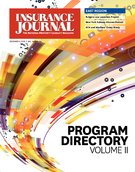Regardless of one’s political leaning, the 2016 presidential election offered bold dialogue. Many criticized the president-elect for brash comments and a disregard for political correctness. If recent news reports are any indication, America could see a shift in terms of society’s interactions — with some brandishing a more emboldened temperament, and others displaying an increased sensitivity. This could be particularly troublesome on college campuses, where faculty have captive audiences in lecture halls, students complain of micro-aggressions, and debate rages over the need for free speech versus safe spaces.
Inside Higher Ed pointed out several examples of discrimination and harassment in a recent article. The publication noted that just days after the election, an individual scribbled the word “Trump” on a Muslim prayer room door at New York University, while a Muslim student at San Diego University claimed she was robbed and mocked for her faith because she was wearing a hijab.
Colleges and universities must understand how the words and actions of campus community members could lead to discrimination or harassment claims. Student harassment issues could create a climate that seeps over into the workplace. Colleges’ agents and brokers can help prepare for this reality, and the first step is understanding the landscape of discrimination and harassment regulations and policies.
According to the U.S. Equal Employment Opportunity Commission, charges of workplace discrimination are on the rise. From 2005 to 2015, charges of discrimination increased nearly 19 percent to roughly 89,000. Retaliation was the most common charge, followed by race, sex, and age discrimination. In a United Educators (UE) survey of 500 harassment claims filed between 2002 and 2011, 28 percent of claims at UE-insured schools, colleges, and universities were race related. Twenty-three percent were sexual harassment claims, 13 percent were disability-related and 8 percent were age-related. The remaining claims were associated with national origin or religion.
What can employers — colleges and universities in particular — do to protect their faculties, staff, and bottom lines?
Regardless of how emboldened individuals become, federal and state law prohibits harassment and discrimination. Individuals are also protected by their institution’s policies, which may provide broader protections for certain classes. The Civil Rights Act does not specifically prevent discrimination on grounds of sexual orientation, but some states, localities, and institutions do. Agents can connect education clients with specialty insurers who have risk management resources that can assist universities with compliance issues and employee training.
Colleges and universities need to make sure they not only have the right policies in place, but that they understand them, apply them, and review them regularly. Good training is also critical; it can encourage a proper response, such as conducting thorough investigations and counseling against retaliation. To make training more appealing and convenient, agents and brokers can recommend online training in preventing harassment and discrimination, which is increasingly available through specialty insurers. An institution’s agents and brokers can help explain the terms of coverage for harassment and discrimination claims.
As an insurer of many higher education institutions, UE knows society is always changing and that, unfortunately, claims of discrimination and harassment will likely continue to be a part of our culture. While colleges and universities do their best to make sure individuals are protected against discrimination and harassment, their insurance professionals can provide valuable support. Agents and brokers can play a crucial role in reducing claims by helping their higher education policyholders know their risks and prepare for potential conflict.
Salko is senior risk management counsel at United Educators (UE).
Topics Lawsuits Agencies Claims Education Training Development Universities
Was this article valuable?
Here are more articles you may enjoy.


 Employer Can’t Deny Comp Claim in Shooting Then Argue Immunity, Court Says
Employer Can’t Deny Comp Claim in Shooting Then Argue Immunity, Court Says  California Sees Two More Property Insurers Withdraw From Market
California Sees Two More Property Insurers Withdraw From Market  Fla. Regulators’ Effort to Remove Insurer Execs May Not Pass Constitutional Muster
Fla. Regulators’ Effort to Remove Insurer Execs May Not Pass Constitutional Muster  Two Montgomery Workers Charged with Insurance Fraud in Alabama
Two Montgomery Workers Charged with Insurance Fraud in Alabama 


